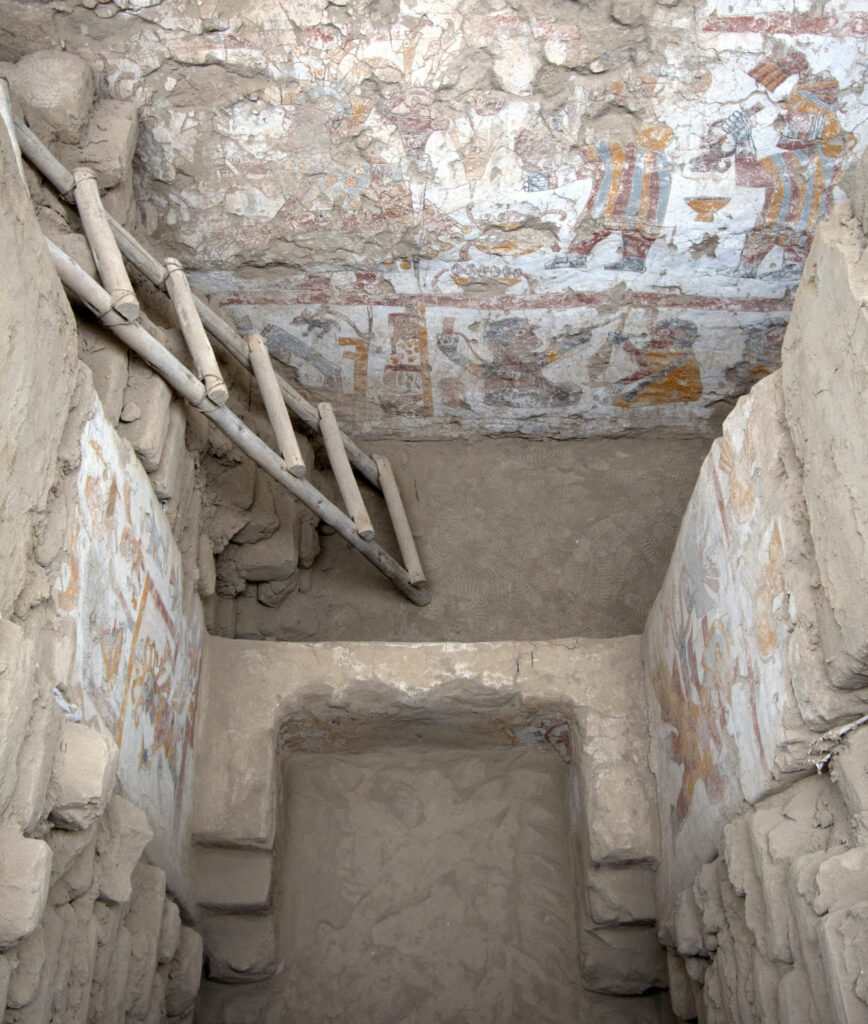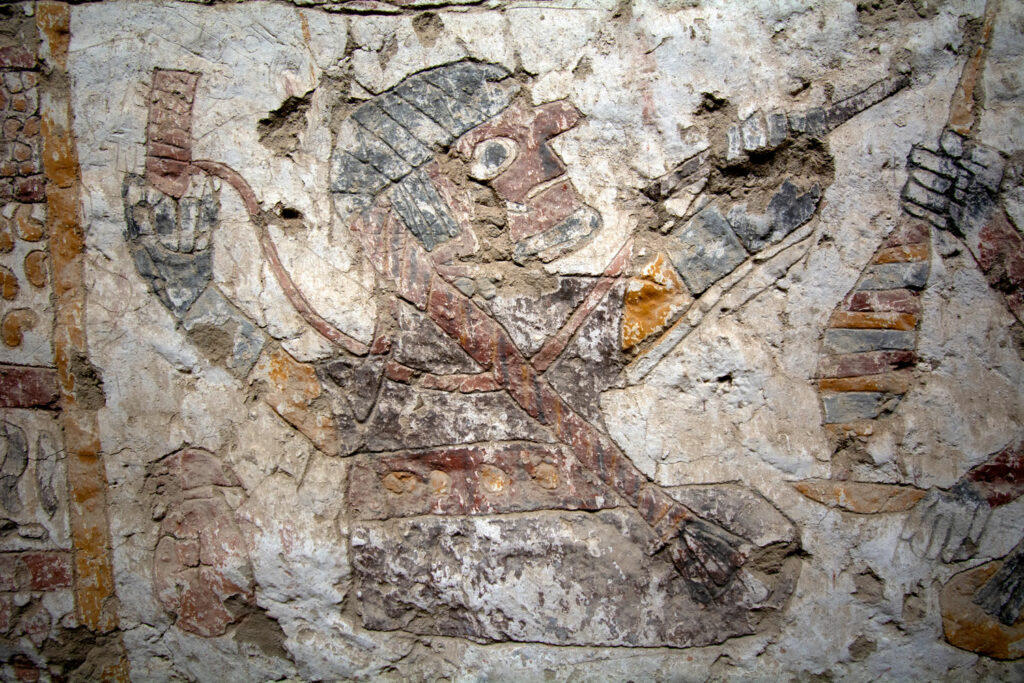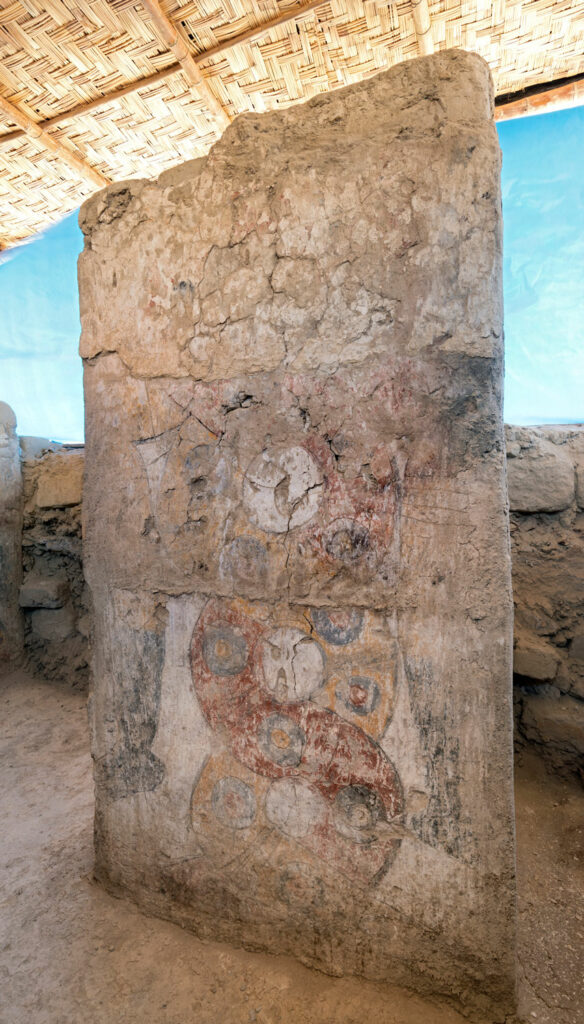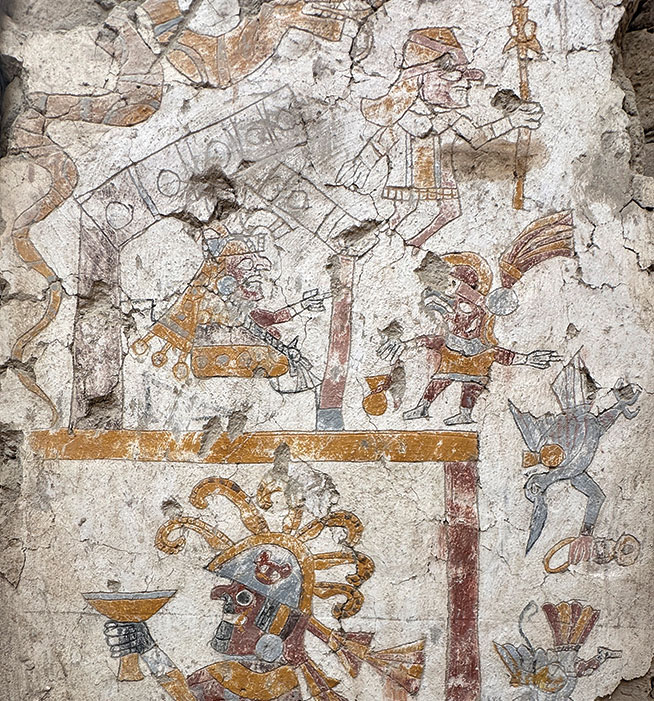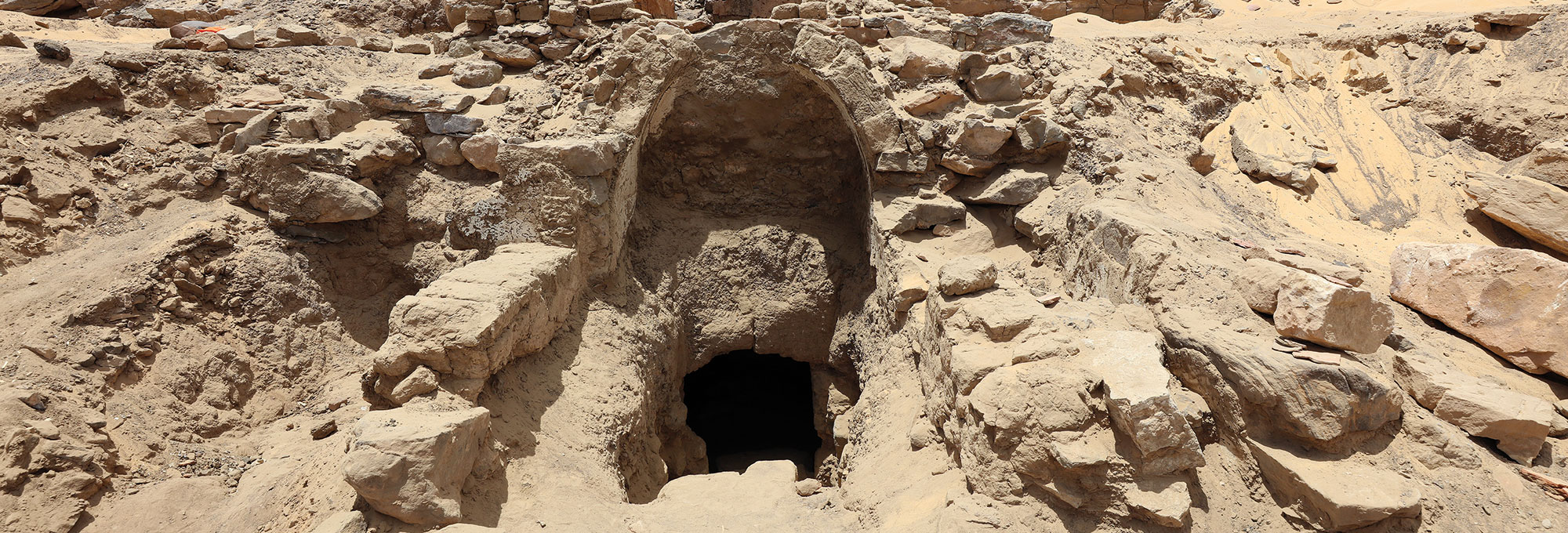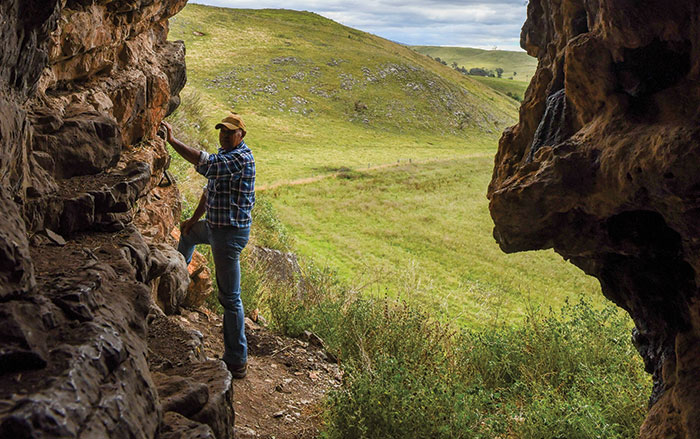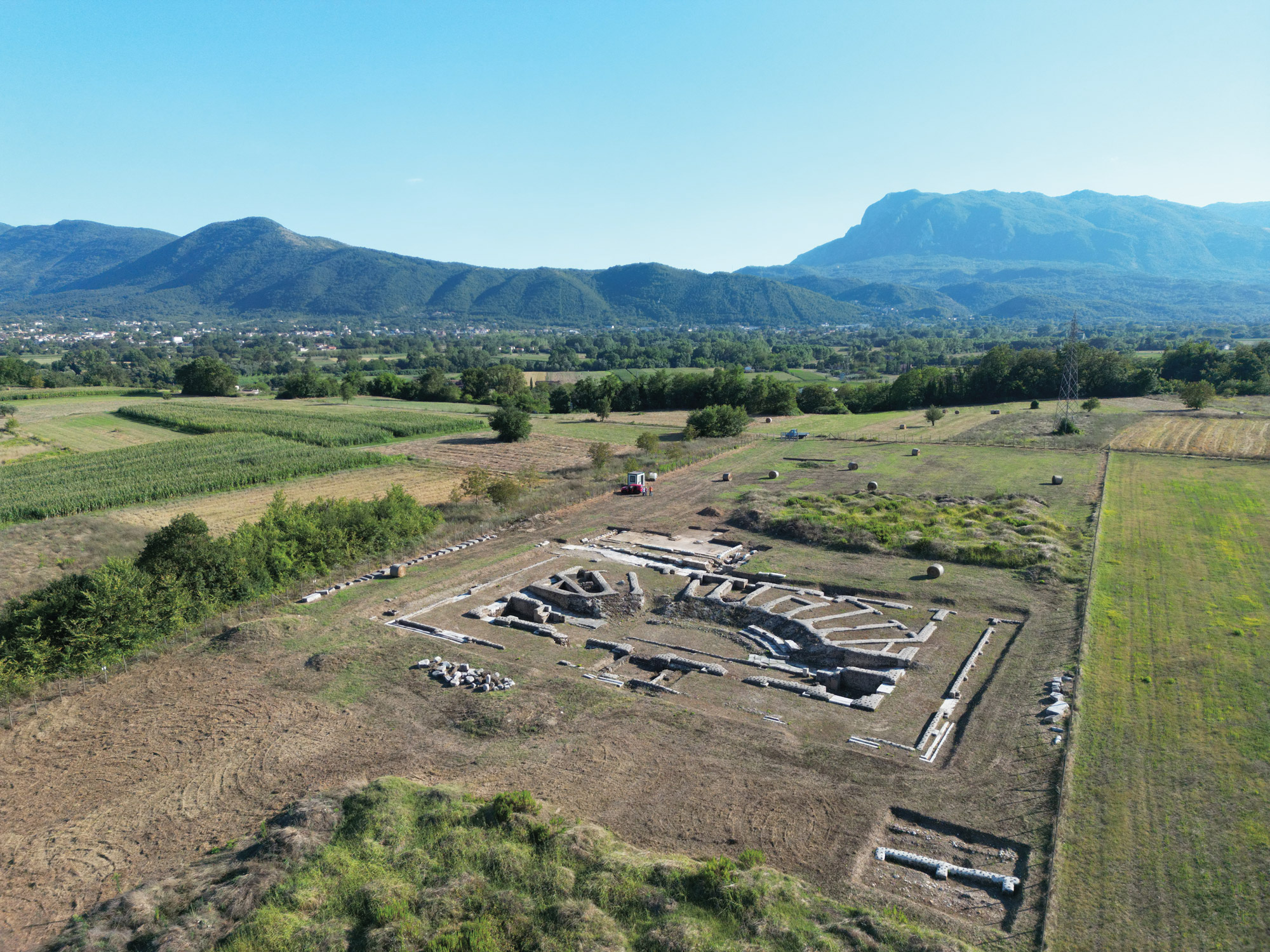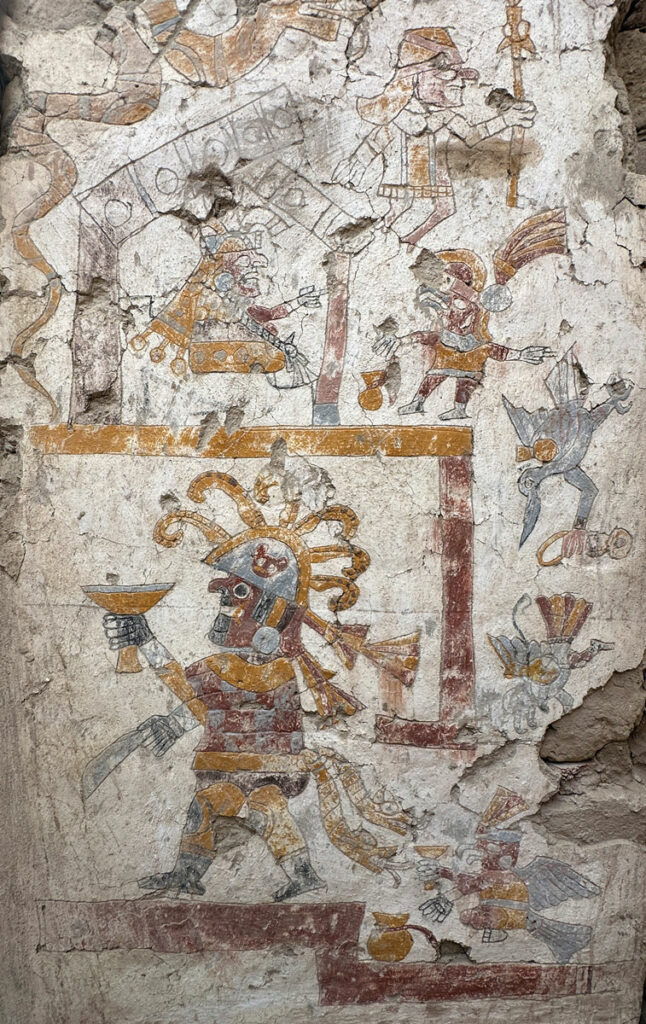
At the site of Pañamarca, a monumental center belonging to the Moche people, who controlled northern Peru’s coastal valleys between around a.d. 350 and 850, archaeologists have discovered the first evidence of a throne room designed for a Moche queen. While working in a large pillared hall, a team led by archaeologists Jessica Ortiz Zevallos of the Archaeological Landscapes of Pañamarca program, Lisa Trever of Columbia University, and Michele Koons of the Denver Museum of Nature & Science unearthed extremely well-preserved murals executed in vivid blue, red, and yellow depicting four scenes that highlight a powerful woman. One panel shows the woman receiving a procession of visitors, and in another, she is seated on a throne.
Even more stunning than the paintings is physical evidence of an adobe throne whose back support is eroded from having been leaned against. The team found greenstone beads, fine threads, and even a human hair all embedded in the throne’s surface. “A real, living person occupied this throne in the seventh century a.d., and all the evidence suggests that this leader was a woman,” says Trever. The paintings, therefore, are not just storytelling. “We have a lot of evidence of powerful women in Moche culture who are usually referred to as priestesses. But what we have here is someone who had a seat of political power,” says Koons. “This makes us rethink our notions of gender roles in the Moche world and suggests that their society may have been more fluid than previously thought. We’ve never seen a queen’s throne room at Pañamarca, or anywhere else in ancient Peru.”

Slideshow: Peru’s Ancient Queen
Rising above a verdant valley floor, just miles from the Pacific coast in northern Peru, the ancient Moche center of Pañamarca holds many secrets. This was a center of unparalleled creativity during the seventh and eighth centuries a.d. Thrilling discoveries in 2024 revealed that it was also a place that defied traditional ideas about political power and divine authority. A remarkable earthen throne, newly revealed painted halls, and the colorful imagery they bear offer a new perspective on the role Indigenous women played there.
